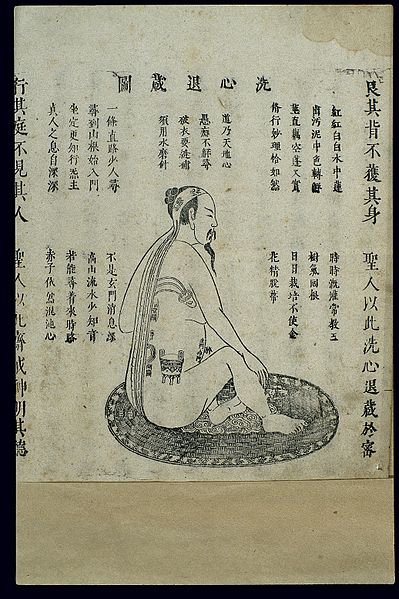Three Treasures (traditional Chinese medicine)
The Three Treasures or Three Jewels are theoretical cornerstones in traditional Chinese medicine and practices such as neidan, qigong, and tai chi. They are also known as jing, qi, and shen.
Woodcut illustration of the 'Great and Small Cauldron and Furnace' from Pointers on Spiritual Nature and Bodily Life Xingming guizhi, a Daoist text on internal alchemy published 1615. In the figurative language of neidan, the 'cauldron' (ding) refers to the head and the 'furnace' (lu) to the abdomen; the 'great cauldron' is the place of the refinement of jin, qi, and shen
Woodcut illustration of the practice known as 'Refining form in the True Void' (zhenkong lianxing) from 1615 Xingming guizhi
Neidan, or internal alchemy, is an array of esoteric doctrines and physical, mental, and spiritual practices that Taoist initiates use to prolong life and create an immortal spiritual body that would survive after death. Also known as Jindan, inner alchemy combines theories derived from external alchemy, correlative cosmology, the emblems of the Yijing, and medical theory, with techniques of Taoist meditation, daoyin gymnastics, and sexual hygiene.
Chinese woodblock illustration of neidan "Putting the miraculous elixir on the ding tripod", 1615 Xingming guizhi (Pointers on Spiritual Nature and Bodily Life)
Chinese woodblock illustration of neidan "Cleansing the heart-mind and retiring into concealment", 1615 Xingming guizhi
Neidan practice





